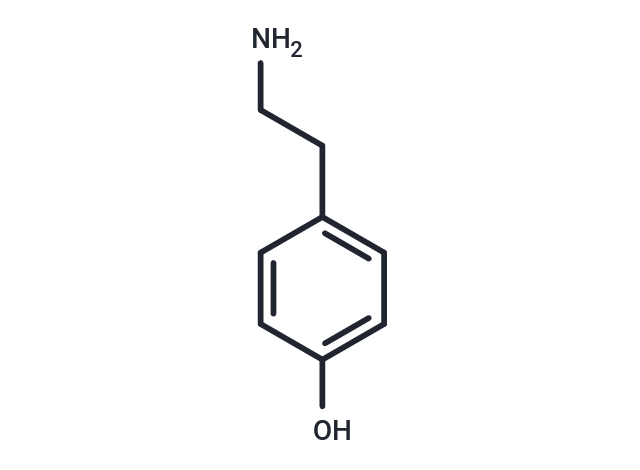Shopping Cart
- Remove All
 Your shopping cart is currently empty
Your shopping cart is currently empty

Tyramine (Uteramine) is an indirect sympathomimetic that occurs naturally in cheese and other foods. Tyramine does not directly activate adrenergic receptors, but it can serve as a substrate for adrenergic uptake systems and MONOAMINE OXIDASE to prolong the actions of adrenergic transmitters. It also provokes transmitter release from adrenergic terminals and may be a neurotransmitter in some invertebrate nervous systems.

| Pack Size | Price | Availability | Quantity |
|---|---|---|---|
| 500 mg | $42 | In Stock | |
| 1 g | $50 | In Stock | |
| 1 mL x 10 mM (in DMSO) | $46 | In Stock |
| Description | Tyramine (Uteramine) is an indirect sympathomimetic that occurs naturally in cheese and other foods. Tyramine does not directly activate adrenergic receptors, but it can serve as a substrate for adrenergic uptake systems and MONOAMINE OXIDASE to prolong the actions of adrenergic transmitters. It also provokes transmitter release from adrenergic terminals and may be a neurotransmitter in some invertebrate nervous systems. |
| Targets&IC50 | TAAR1 (human):34 nM(Ki) |
| Alias | Uteramine, Tocosine, p-Tyramine, para-tyramine, 4-hydroxyphenethylamine |
| Molecular Weight | 137.18 |
| Formula | C8H11NO |
| Cas No. | 51-67-2 |
| Smiles | NCCc1ccc(O)cc1 |
| Relative Density. | 1.103g/cm3 |
| Storage | Powder: -20°C for 3 years | In solvent: -80°C for 1 year | Shipping with blue ice. | |||||||||||||||||||||||||||||||||||
| Solubility Information | DMSO: 55 mg/mL (400.93 mM), Sonication is recommended. | |||||||||||||||||||||||||||||||||||
Solution Preparation Table | ||||||||||||||||||||||||||||||||||||
DMSO
| ||||||||||||||||||||||||||||||||||||

Copyright © 2015-2025 TargetMol Chemicals Inc. All Rights Reserved.